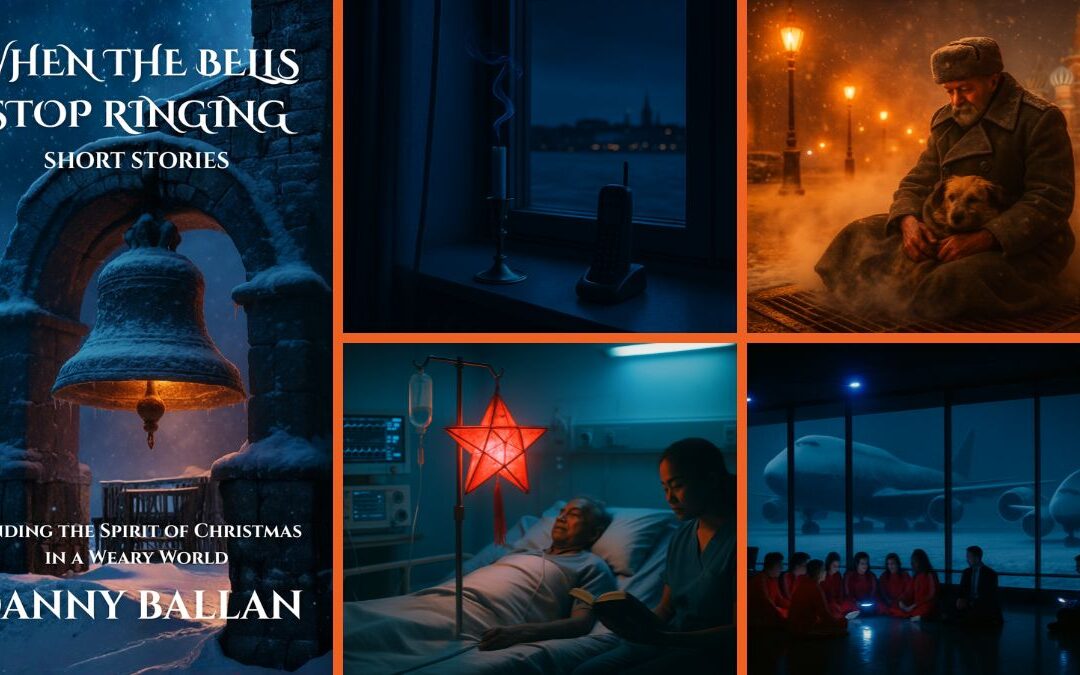Introduction
You’re walking through a crowded market. The air is thick with the scent of spices, street food, the low hum of a thousand conversations. It feels normal. Familiar. Now, imagine a single, invisible microbe, no bigger than a speck of dust, making a microscopic leap from an animal to a person in that market. A leap that goes unnoticed. A single, silent event.
In a week, that one person has a fever. In two weeks, their entire neighborhood is sick. In a month, the city’s hospitals are overflowing. And in three months… well, in three months, the world you knew is gone. Airplanes are grounded, store shelves are empty, and the simple act of breathing near another human being has become a calculated risk.
Sound like a sci-fi thriller? The problem is, it’s not. It’s a documentary of our recent past, and a potential trailer for our not-so-distant future. The COVID-19 pandemic wasn’t a black swan event, a once-in-a-millennium catastrophe. To scientists who study this for a living, it was an inevitability. A matter of when, not if.
So now that we’ve had this global dress rehearsal, the question is: what did we learn? When the next microscopic monster—what the World Health Organization ominously calls “Disease X”—comes knocking, will we be ready? Or are we doomed to repeat the same frantic, chaotic scramble that cost millions of lives and shattered our sense of normalcy?
Welcome to the episode. Today, we’re stepping into the high-stakes world of pandemic preparedness. We’re not here to fear-monger, but to arm you with knowledge. We’re going to pull back the curtain on the invisible threats that are currently on scientists’ watchlists. We’ll explore the mind-bending technology being developed to hunt down and neutralize these pathogens before they can explode. And we will ask the big, burning questions:
How do you fight a war against an enemy you can’t see? What does it truly mean for a country, for a city, for a hospital, to be ‘prepared’? Is global cooperation in the face of a worldwide threat a utopian dream or an achievable necessity? And perhaps most importantly, in an age of rampant misinformation, how do we, as individuals, separate the life-saving facts from the lethal fictions?
This isn’t just a conversation about viruses and vaccines. It’s about infrastructure, technology, politics, psychology, and the very fabric of our interconnected world. We believe that understanding these complex issues is the first step toward building a safer future. And while a single podcast episode can’t make you an expert, it can ignite your curiosity and give you the framework to think critically about one of the most defining challenges of our time. True mastery of any topic requires a deep dive, dedicated reading, and personal research. Consider this your launching pad.
So, take a deep breath—while you still can without thinking twice about it—and let’s get into it.
Podcast Script: Bracing for Disease X
Alright, let’s start with a term that sounds like it was ripped straight from a comic book: Disease X. It’s a placeholder name, a hypothetical bogeyman that the World Health Organization uses, but it represents something terrifyingly real: the next unknown pathogen with the potential to cause a global pandemic. It’s not a specific virus they’ve found; it’s the acknowledgment that the next big one might be something we’ve never even seen before.
Think about it. Most of the new infectious diseases that have afflicted humanity in the last fifty years have one thing in common: they are the result of zoonotic spillover. That’s the fancy term for a disease jumping from an animal to a human. HIV, Ebola, Swine Flu, Avian Flu, and of course, SARS-CoV-2, the virus that causes COVID-19—they all started in animals. As human populations expand, we push deeper into forests, wetlands, and other wild habitats, increasing our contact with animals and the vast, uncharted universe of viruses they carry. We’re essentially knocking on doors we shouldn’t be, and occasionally, something nasty answers.
This isn’t a new phenomenon, of course. The Black Death was spread by fleas on rats. But the speed and scale of modern life have changed the game entirely. A virus used to travel at the speed of a horse-drawn cart; now it travels at the speed of a Boeing 787. An outbreak in a remote village can be in New York, London, and Tokyo within 24 hours. That’s the reality of our globalized world.
So, lesson number one from our recent pandemic experience is that our surveillance systems have to be top-notch. We need an early warning system for pathogens. Imagine a global weather service, but for infectious diseases. Scientists are working on this, using a combination of on-the-ground sample collection and cutting-edge genetic sequencing. They test wastewater, they monitor livestock, they sequence the genomes of viruses found in bats and rodents in remote caves. The goal is to create a massive library of potential threats, so that when a new, unknown virus pops up in a human patient, we can quickly sequence its DNA and check our library. If we get a match, or something close to it, we have a massive head start. We might already know which family it belongs to, what its weaknesses might be, and how to start designing a vaccine.
This brings us to the “100 Days Mission.” This is an ambitious goal, backed by international coalitions like CEPI, the Coalition for Epidemic Preparedness Innovations. The mission is to have the ability to develop a safe, effective vaccine against any new pandemic threat within 100 days of it being identified.
One hundred days. That sounds insanely fast, and it is. The COVID-19 vaccines were developed in a record-breaking 300-odd days, and that was considered a modern miracle. To get to 100 days requires a paradigm shift. It means having pre-approved vaccine platforms, like the mRNA technology used by Pfizer and Moderna, ready to go. Think of it like having a basic cake recipe already perfected. When a new virus emerges, you don’t have to invent the concept of a cake from scratch. You just need the specific ingredient—the genetic code of that new virus—to pop into your recipe, and you can start baking immediately. It also means running regulatory, testing, and manufacturing processes in parallel, not sequentially, which is a logistical and bureaucratic nightmare of the highest order.
But a vaccine that exists only in a lab is useless. You need to be able to manufacture billions of doses and get them into arms around the world. This was a colossal failure during COVID-19. We saw “vaccine nationalism,” where rich countries bought up most of the initial supply, leaving lower-income nations waiting for months, if not years. This isn’t just morally questionable; it’s epidemiologically stupid. A virus doesn’t care about borders. As long as it’s spreading and replicating anywhere in the world, it has the opportunity to mutate into a new, more dangerous variant that could evade our existing vaccines and put everyone, rich and poor, back at square one. A pandemic is a global problem, and it demands a global solution. Any form of preparedness that isn’t equitable is, frankly, no preparedness at all.
This highlights the unglamorous but absolutely critical role of infrastructure. We’re talking about the nuts and bolts. Do hospitals have enough beds, ventilators, and personal protective equipment, or PPE? Is there a robust supply chain to get masks, gloves, and medicines where they need to go, or will it crumble under pressure, creating critical bottlenecks? Do we have enough trained healthcare workers, or are they already overworked and burned out before the crisis even hits?
During COVID, we saw healthcare systems in even the wealthiest nations pushed to the brink of collapse. Doctors and nurses were forced into the horrifying position of triage—making impossible decisions about who gets the last ICU bed, who gets the ventilator. Preparing for the next pandemic means investing in this infrastructure now, during peacetime. It means building surge capacity into our hospitals, stockpiling essential supplies, and treating our healthcare professionals like the vital national security assets they are. It’s not as exciting as gene sequencing, but it’s just as important, if not more so.
And then there’s the other front in this war: the battle for truth. A pathogenic virus is dangerous, but a viral lie can be just as deadly. The COVID-19 pandemic was accompanied by what the WHO called an “infodemic”—a tidal wave of misinformation and disinformation that spread like wildfire on social media. False cures, conspiracy theories about the virus’s origin, and anti-vaccine propaganda eroded public trust and undermined public health efforts at every turn. People refused to wear masks, ignored social distancing guidelines, and rejected life-saving vaccines, all based on things they read on Facebook or saw on YouTube.
How do we combat this? It’s one of the thorniest problems of our age. It involves a combination of promoting media literacy, holding social media platforms accountable for the content they amplify, and having trusted, transparent communication from public health officials. When people are scared and confused, they crave clear, consistent, and honest information. If they don’t get it from official sources, they will absolutely get it from somewhere else, and that somewhere else often has a dangerous agenda.
This brings us to the role of the individual. It’s easy to look at a problem of this magnitude and feel powerless. But individual actions, when multiplied by millions, create the collective response that can make or break a pandemic outcome. It starts with a commitment to critical thinking. Where is this information coming from? Is the source credible? Does it align with the broad consensus of the scientific community? It also means embracing the idea that public health is a team sport. Sometimes, that means accepting minor inconveniences for the sake of the greater good, whether it’s wearing a mask, getting a vaccine, or staying home when you’re sick.
The specter of another pandemic is daunting, there’s no doubt about it. The threats are real. But we are not helpless. We have scientific tools and a capacity for innovation that would have been unimaginable a few decades ago. We have the searingly painful but invaluable lessons from our last encounter with a global plague. We know what we need to do: enhance our global surveillance, perfect our rapid-response technologies, build resilient and equitable healthcare systems, combat misinformation, and foster a culture of global cooperation and individual responsibility.
The question is no longer what to do. The question is whether we will have the political will, the financial investment, and the collective foresight to do it. The next pandemic isn’t a matter of if, but when. And when it arrives, the world’s preparedness will be the ultimate test of everything we claim to have learned. The final grade will be written not in a report, but in the number of lives saved or lost.
Focus on Language: Vocabulary & Speaking
Alright, that was a lot to take in, I know. These are big, complex topics. But as we always say, building your knowledge base and building your language skills go hand-in-hand. When you learn about the world, you learn the words to describe it. So let’s slow down for a bit and zoom in on some of the key vocabulary and phrases we used in that segment. This is where we arm you with the language you need to have these important conversations yourself.
Let’s start with a big one we mentioned right at the beginning: zoonotic spillover. It sounds incredibly scientific, but the concept is actually quite simple. ‘Zoo’ relates to animals, and ‘spillover’ is just what it sounds like—like when you overfill a cup and the water spills over the edge. So, a zoonotic spillover is when a germ, like a virus or bacteria, “spills over” from an animal population into a human one. In the episode, we said, “Most of the new infectious diseases… are the result of zoonotic spillover.” You can use this phrase when you’re talking about the origins of diseases. But the word ‘spillover’ on its own is super useful in everyday life. You could talk about the ‘spillover effect’ of a stressful day at work affecting your mood at home. For example: “I had a terrible meeting, and I’m sorry if there was a bit of a spillover. I didn’t mean to be so grumpy.” It refers to the unintended consequences of something affecting another area.
Next up is the word pathogenic. We said, “A pathogenic virus is dangerous, but a viral lie can be just as deadly.” A pathogen is simply a microorganism—a bacterium, virus, or fungus—that can cause disease. So, pathogenic is the adjective form. It means “disease-causing.” While you might not use pathogenic when describing your common cold, it’s essential for any serious discussion about health. You could say, “Scientists are studying the pathogenic properties of this new strain of bacteria.” It adds a level of scientific precision to your language.
Let’s talk about infrastructure. We said that a key part of preparedness is investing in infrastructure, like hospitals and supply chains. Infrastructure refers to the basic physical and organizational structures and facilities needed for the operation of a society or enterprise. It’s a fantastic word because it applies to so many things. Your city’s infrastructure includes its roads, bridges, water pipes, and electrical grids. A company’s IT infrastructure includes its servers, networks, and software. You could say, “The country needs to invest more in its public transportation infrastructure,” or “Our company’s digital infrastructure is outdated and needs a complete overhaul.” It’s a powerful word for talking about foundational systems.
Now for a word that became all too familiar: triage. We mentioned doctors having to perform triage in overflowing hospitals. Triage is the process of sorting and prioritizing. In a medical context, it means sorting patients based on the urgency of their need for care. It’s a heavy word with life-and-death connotations. But the concept of triage can be applied in many other situations, especially in business or project management. If you have too many tasks and not enough time, you have to triage them. “Okay team, we have twenty bugs to fix before the launch. We need to triage this list and focus on the most critical ones first.” It means prioritizing based on urgency and importance.
Another key concept was a bottleneck. We talked about how supply chains can crumble under pressure, creating critical bottlenecks. A bottleneck is literally the narrow neck of a bottle that slows down the flow of liquid. Metaphorically, it’s any point in a process where the flow is congested or stopped. It’s an incredibly useful word. “The main bottleneck in our production process is the packaging machine; it just can’t keep up.” Or, in traffic: “There’s a major bottleneck on the interstate because of an accident.” Any time a system is being held up by one specific part, that’s your bottleneck.
Let’s move on to surveillance. We discussed the need for “global surveillance” for diseases. Surveillance means close observation, especially of a suspected spy or criminal. But in public health, it means the continuous, systematic collection, analysis, and interpretation of health-related data. You can also use it more broadly. For example, “The new security system includes 24-hour video surveillance of the premises.” It has a slightly cautious or even suspicious feel to it, which is why it’s used for both disease and crime.
Now, a more hopeful term: paradigm shift. We said that achieving the 100 Days Mission requires a paradigm shift. A paradigm is a typical example or pattern of something; a model. So a paradigm shift is a fundamental change in approach or underlying assumptions. It’s a big deal. The invention of the internet caused a paradigm shift in communication. The move from fossil fuels to renewable energy is another paradigm shift. You use this phrase to describe a major, revolutionary change. “The adoption of remote work represents a paradigm shift in office culture.”
Let’s touch on equitable. We argued that preparedness that isn’t equitable isn’t true preparedness. Equitable means fair and impartial. It’s a bit different from ‘equal’. Equal means giving everyone the same thing. Equitable means giving people what they need to achieve the same outcome. For example, an equal solution would be giving three people of different heights the same size box to stand on to see over a fence. An equitable solution would be giving them different sized boxes so they can all see over the fence. It’s a crucial distinction. You can say, “We need to ensure the equitable distribution of resources to all schools, not just those in wealthy neighborhoods.”
Next is infodemic. We used it to describe the tidal wave of misinformation that accompanied the pandemic. This is a newer word, a blend of ‘information’ and ‘epidemic’. An infodemic is an excessive amount of information about a problem that is typically unreliable, spreads rapidly, and makes a solution more difficult to achieve. It’s the perfect word for our digital age. “During the election, it was hard to find the truth in the middle of the social media infodemic.”
Finally, let’s look at resilient. We talked about the need to build resilient healthcare systems. Resilient means being able to withstand or recover quickly from difficult conditions. It can apply to people, systems, materials, you name it. A person can be emotionally resilient if they bounce back from setbacks. An economy can be resilient if it can withstand a recession. “We need to build our cities to be more resilient to the effects of climate change.” It’s a powerful, positive word that’s all about strength and flexibility.
So there you have it: zoonotic spillover, pathogenic, infrastructure, triage, bottleneck, surveillance, paradigm shift, equitable, infodemic, and resilient. Try to use one or two of them this week. Maybe you’ll need to triage your to-do list, or you’ll identify a bottleneck in a project at work. The more you use them, the more they become a natural part of your advanced English vocabulary.
Now, let’s talk about how to use these words in conversation. A big challenge when discussing complex topics like pandemics is sounding certain without sounding arrogant, and expressing doubt without sounding uninformed. This is the skill of expressing nuance.
One of the best ways to do this is by using qualifying phrases or “hedging” language. Instead of saying “Vaccine nationalism is wrong,” which is a very strong, absolute statement, you could say what we said in the episode: “This isn’t just morally questionable; it’s epidemiologically stupid.” Notice the nuance. It presents a strong opinion but frames it as an argument with two distinct parts—a moral one and a scientific one.
Another technique is to use phrases that show you’re considering multiple perspectives. For example, instead of just saying “We must cooperate globally,” you can frame it as a challenge: “The big question is whether global cooperation is a utopian dream or an achievable necessity.” This acknowledges the difficulty and invites discussion rather than shutting it down.
You can use phrases like:
“On the one hand…, but on the other hand…”
“While it’s true that…, it’s also important to remember that…”
“One could argue that…, however, the data seems to suggest…”
“It seems to me that…” or “My understanding is that…”
So here’s your challenge for this week. I want you to pick one of the discussion questions we’re about to get to. Think about your opinion on it. Then, I want you to record yourself on your phone, speaking for just two minutes. Try to use at least two of the vocabulary words we discussed today, and more importantly, try to use at least two of those “nuance-phrases” to express your opinion in a thoughtful, balanced way. Don’t just state your belief. Explain the complexities. Acknowledge the other side of the argument, even if you disagree with it. This practice will elevate your speaking from just stating facts to engaging in sophisticated discourse. It’s a skill that will serve you well in any debate, meeting, or important conversation.
Let’s Discuss
Alright, we’ve covered a lot of ground. We’ve talked about the science, the logistics, and the language of pandemics. But as we always emphasize, this conversation isn’t complete without you. True understanding comes from wrestling with these ideas yourself. So, here are a few questions to get you thinking and, we hope, discussing in the comments section on our website.
- The Balance of Power: Personal Freedom vs. Public Health
During the last pandemic, we saw major debates over things like mask mandates and lockdowns. Where do you draw the line between individual liberty and collective responsibility in a public health crisis?
- Think about this: Is this line fixed, or does it shift depending on how deadly a virus is? Consider the role of government mandates versus voluntary compliance. What’s the most effective and ethical approach to getting a population to act in the interest of public health?
- The Infodemic Challenge: Who is Responsible?
We discussed how misinformation can be as dangerous as the virus itself. Who do you believe bears the primary responsibility for combating it?
- Think about this: Is it the government’s job to regulate information? Should social media platforms be held liable for the content they host? Or does the ultimate responsibility lie with individuals to become more critical consumers of information? Discuss the pros and cons of each approach.
- Investing in Tomorrow: Preparedness in Peacetime
Building resilient healthcare infrastructure and funding scientific research is expensive, and it’s often a low priority when there isn’t an immediate crisis. How can societies and governments maintain the urgency and investment needed for pandemic preparedness during the “peaceful” years in between outbreaks?
- Think about this: Consider the political challenges. How do you convince taxpayers to fund a problem that feels abstract and far away? What are some creative ways to keep public awareness high? Could this be framed as an economic investment or a national security issue rather than just a health issue?
- Global vs. National: The Equity Dilemma
We saw how “vaccine nationalism” hampered the global response to COVID-19. In a future crisis, how can we ensure a more equitable distribution of life-saving resources like vaccines and treatments?
- Think about this: Is it realistic to expect a country to prioritize global needs over its own citizens’ immediate demands? What kind of international treaties or organizations could enforce a more equitable response? Consider the role of pharmaceutical companies and the patent system.
- The Psychological Scar: How Has the Last Pandemic Changed You?
On a personal level, how has your experience with the COVID-19 pandemic permanently altered your behavior, your worldview, or your priorities?
- Think about this: Are you more or less trustful of institutions? Has it changed how you view your community, your work-life balance, or your own health? Share a specific way your perspective has shifted and what you think the long-term psychological impact on our society will be.
We genuinely want to hear your thoughts on these. There are no easy answers, but the conversation itself is what matters. Head over to our website to share your take.
Outro
(Upbeat, thoughtful outro music fades in)
And that brings us to the end of another episode. We hope we’ve given you some powerful food for thought, and some even more powerful language to discuss it with. Remember, the goal of these conversations is not to have all the answers, but to learn how to ask better questions and to never stop being curious.
If you want to continue this journey with us, and we certainly hope you do, the best way to do that is by becoming part of the English Plus ecosystem. You can find transcripts for our episodes, deep-dive articles, and engage with our discussion questions on our website at [Your Website Here].
And if you’re enjoying the podcast, the most supportive thing you can do is unlock all of our content by subscribing to English Plus Premium. You can find it right on Apple Podcasts, or on our Patreon page. This gives you access to our entire back catalog of episodes, bonus content, and so much more.
For those of you who want to dive even deeper and offer the next level of support, you can subscribe to our all-access tier on Patreon. That not only includes everything from English Plus Premium, but also gives you access to all of my other audio series and courses, and for those who are interested in my other creative pursuits, you’ll get a front-row seat to my original music and writing. It’s the ultimate way to support the work we do here, and my creative work as a whole.
Thank you for lending us your time and your curiosity today. Until next time, keep learning, keep questioning, and keep speaking your mind.










0 Comments